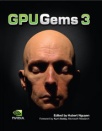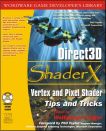I3D 2009, the ACM SIGGRAPH Symposium on Interactive 3D Graphics and Games, will be in Boston on February 27 to March 1. Along with Morgan McGuire I’m a papers cochair this year. Naty served on the papers committee along with 81 others, plus external reviewers; over 300 reviewers were written. We were happy to see a large number of submissions: 87, up from 57 last year. 28 papers were accepted. The papers to be presented are now listed at http://kesen.huang.googlepages.com/i3d2009Papers.htm.
Heh, I just noticed Naty also posted this site; well, a little duplication won’t kill you. Amazing to me, Ke-Sen had already tracked down 9 of the papers accepted at I3D – acceptance notices went out on the 5th. I sent the list of all papers accepted to Ke-Sen, as this became open knowledge on the 15th. Ke-Sen’s listing is about as official as it will get until the final program is published at the I3D site.
I should also note that the Posters deadline is just a few days away, on December 19. Posters are a great way to present an idea or a demo and get feedback from the community, without having to spend the time and effort of writing a full formal paper.

